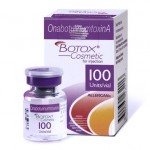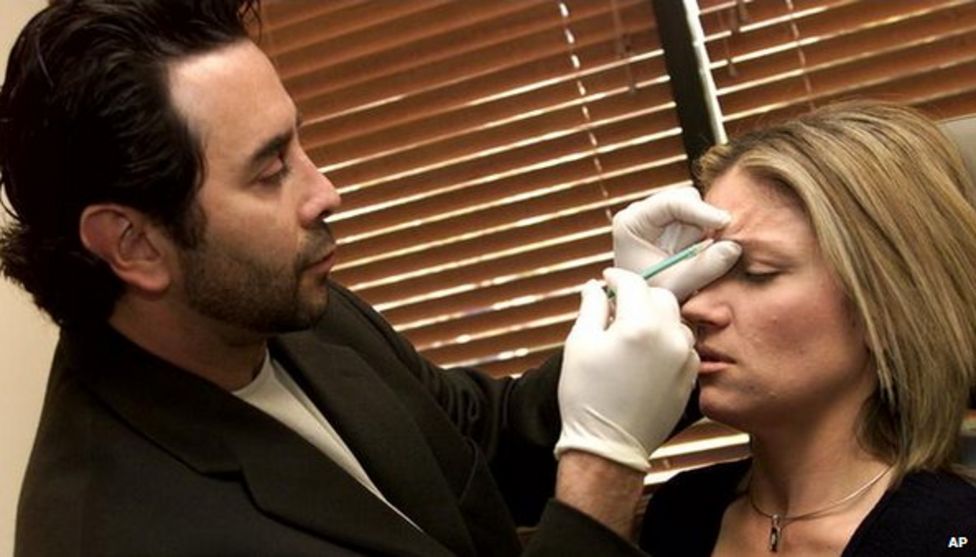
BOTOX ® Patient Assistance™ Program. The program provides BOTOX ® at no charge to financially eligible patients. Those who may qualify include patients who are uninsured or underinsured. Allergan is proud to assist eligible uninsured and underinsured patients with their treatment through the donation of BOTOX vials.
Does Allergan offer financial assistance for Botox?
If you are prescribed Botox, Allergan is offering financial assistance programs to help cover the costs. Each program is different and various programs exist to support patients with private or public insurance, as well as the uninsured. I Have Been Prescribed Botox. What Financial Assistance Programs Exist to Help Me?
What is the Allergan Patient Assistance Program?
The Allergan Patient Assistance Program provides certain products to patients in the United States who are unable to afford the cost of their medication and who meet other eligibility requirements.
What are the terms and conditions of the Botox®* program?
*Program Terms, Conditions, and Eligibility Criteria : 1. Offer good only with a valid prescription for BOTOX ® (onabotulinumtoxinA). 2. Based on insurance coverage, reimbursement may be up to $1000 per treatment with a maximum savings limit of $4000 per year; patient out-of-pocket expense may vary. 3.
Where can I find a Botox savings program?
Visit botoxsavingsprogram.com. Available to patients with commercial prescription insurance coverage who meet eligibility criteria.

Does Allergan have a patient assistance program?
The Allergan Patient Assistance Program (PAP) provides Allergan medicines at no cost to eligible patients. If the patient qualifies, up to a twelve-month eligibility for the requested medication(s) or device(s) is approved for shipment to the patient's licensed prescriber for dispensing.
How can you get Botox for free?
You may be eligible to receive free BOTOX if you:Have been prescribed BOTOX for an eligible diagnosis.Have limited or no health insurance coverage.Live in the United States or Puerto Rico.Are being treated by a licensed U.S. health care provider on an outpatient basis.
Is Botox for migraines free?
In general, the FDA-recommended dosage of 155 units costs between $300 to $600 for each treatment. Because Botox is FDA approved for chronic migraine, it's covered by most plans, including Medicare and Medicaid.
Can Botox get covered by insurance?
99% of commercial insurance plans cover the majority of BOTOX® costs. The BOTOX® Savings Program helps eligible patients receive money back on any out-of-pocket costs not covered by insurance. Have Medicare? You may be able to qualify for assistance from Medicare.
How much does 3 areas of Botox cost?
64 unitsAccording to the recommendations, this requires 20 units. And finally, for the lines further up the forehead, which we just refer to as forehead lines, it takes 20 units of Botox. That's a total of 64 units to treat all three areas.
What is a good price to pay for Botox?
A single unit of Botox costs around $10 to $15, and an average treatment can include 30 to 40 units, the American Society of Plastic Surgeons (ASPS) reported in 2019. That means a typical treatment can run anywhere from $300 to $600.
How do I qualify for Botox for migraines?
OnabotulinumtoxinA, or Botox, was approved in 2010 for adults who get chronic migraines. That means you have both: A history of migraine headaches. Headaches (including tension-type) on most days (15 or more) of the month that last 4 hours a day or longer.
Can I get cosmetic Botox if I get Botox for migraines?
Can I get Botox and Botox Cosmetic at the same time? Yes, you can receive Botox and Botox Cosmetic for different uses at the same time as long as the total dose received of onabotulinumtoxinA does not exceed 400 Units administered in a 3 month period for adults.
Is migraine Botox the same as cosmetic Botox?
The Botox used for migraines and the Botox used for cosmetic procedures is actually exactly the same. "Basically, young and middle-aged women were getting [Botox] for cosmetic purposes, and that's the most common person that has migraines, and that's how they figured out it was helpful," Ravitz tells me.
Can Botox be medically necessary?
If a doctor prescribes Botox for medically necessary reasons, it will be as done as an outpatient medical procedure and covered by original Medicare Part B. FDA approval , and therefore Medicare coverage, includes the following procedures in adults: severe underarm sweating. preventing migraines.
How do I get Botox on my forehead with insurance?
You may need to meet certain criteria to get Botox approved by your insurance company. This can include things like: History of chronic migraines (15 or more headaches each month for at least 3 months) Tried at least two other treatments without any improvement.
Can you get Botox for medical reasons?
BOTOX injections can be used to treat excessive sweating, neck or eye spasms, overactive bladder symptoms, and even migraines. Read on to learn more about BOTOX injections for medical reasons from board-certified internist Dr. Dale Prokupek and the expert team at Aesthetic Body Solutions in Beverly Hills, CA.
How do people afford Botox and fillers?
Tips To Help You Budget Your Fillers OptimallyCharge The Sessions To Your Credit Card. ... Try To Book Appointments In The Middle Of The Month. ... Adjust The Botox Units As Needed, or Alternate the Areas. ... Prioritize your spending. ... Create A Facial Injection Savings Account.
How do you qualify for Botox?
As Botox is a prescription only medication, practitioners who do not hold a prescribing qualification must essentially “team up” with a doctor or other prescribing medical professional in order to prescribe the Botox for their patients. You can find a more in-depth explanation of prescribing here.
How much is Botox for 11 lines?
On average 25 units of Botox will give your skin by your glabellar a full correction and will remove the 11 lines. The '11 lines' are the glabellar lines in between your eyes and eyebrows. The amount of units botox between the eyebrows and eyes that you need for your 11 lines is dependent on how severe your lines are.
How Much Is Botox the first time?
If you pay per area, getting Botox in your forehead will cost $250 on the low end and up to $600+ on the high end. If you pay per unit, the cost will depend on what your provider chargers per unit, so it's not as easy to give a price range, but it can end up being a bit cheaper if you only want/need a bit of Botox.
How to contact Botox for reimbursement?
If you have this many people in your household…. Call the hotline at 1-800-44-BOTOX (1-800-442-6869). A Reimbursement Counselor can help answer questions and send you an application. Or partner with your healthcare provider to complete a Program Application online at botoxone.com/PatientAssistanceProgram.
How to contact Botox?
Call the hotline at 1-800-44-BOTOX (1-800-442-6869). A Reimbursement Counselor can help answer questions and send you an application. Or partner with your healthcare provider to complete a Program Application online at botoxone.com/PatientAssistanceProgram.
What is Botox injection?
Botox is a prescription medicine that is injected to prevent headaches for those living with chronic migraine disease. If you or someone you know requires help with paying for treatment, review the details provided below to see if you qualify for the manufacturer’s financial assistance program. Please note: This guide has not been produced ...
What is PAF for migraine?
PAF also offers one-on-one case management assistance through its dedicated Migraine Careline for people living with migraine who experience access challenges. The Migraine Careline provides assistance with: navigating eligibility and enrollment in disability benefits; overcoming insurance coverage; and financial burdens that impact patient access to care.
How long does it take to get a reimbursement check for Botox?
If your claim is accepted and processed, you will receive a Botox Savings Program reimbursement check in as little as 2-3 weeks. I Have Medicare, Medicaid or other Government Insurance Plan.
How much does insurance cover for botox?
Highlights of the BOTOX Savings Program. Most insurance plans cover the majority of Botox costs and on average, you will pay $164 out of pocket per treatment.*. Depending on your insurance coverage, eligible insured patients can receive reimbursement to help with remaining costs allowing you to pay $0.
How old do you have to be to get Botox?
Your doctor writes you a prescription for Botox. Visit botoxsavingsprogram.com to check eligibility and enroll in the program. You may be eligible if you’re 18 years or older, have commercial insurance and receive Botox treatment for chronic migraine.
What insurance covers botox?
99% of commercial insurance plans cover the majority of BOTOX ® costs. †
What is the phone number for Botox?
For questions about the program, please call 1-800- 44-BOTOX.
What are the side effects of Botox injections?
Other side effects of BOTOX® include dry mouth; discomfort or pain at the injection site; tiredness; headache; neck pain; eye problems such as double vision, blurred vision, decreased eyesight, drooping eyelids, swelling of your eyelids, dry eyes; drooping eyebrows; and upper respiratory tract infection. In adults being treated for urinary incontinence, other side effects include urinary tract infection and painful urination. In children being treated for urinary incontinence, other side effects include urinary tract infection and bacteria in the urine . If you have difficulty fully emptying your bladder on your own after receiving BOTOX ®, you may need to use disposable self-catheters to empty your bladder up to a few times each day until your bladder is able to start emptying again.
What are the effects of botulinum toxin?
The effect of botulinum toxin may affect areas away from the injection site and cause serious symptoms, including loss of strength and all-over muscle weakness; double vision; blurred vision; drooping eyelids; hoarseness or change or loss of voice; trouble saying words clearly; loss of bladder control; trouble breathing; and trouble swallowing
How to report side effects of prescription drugs?
You are encouraged to report negative side effects of prescription drugs to the FDA. Visit www.fda.gov/medwatch or call 1-800-FDA-1088.
Can Botox be used on the skin?
BOTOX ® is also injected into the skin to treat the symptoms of severe underarm sweating (severe primary axillary hyperhidrosis) when medicines used on the skin (topical) do not work well enough in people 18 years and older.
Is Botox a cosmetic?
For information on BOTOX ® Cosmetic ( onabotulinumtoxinA) please see BotoxCosmetic.com . Please see BOTOX ® Cosmetic full Prescribing Information including Boxed Warning and Medication Guide.
What is the phone number for Botox?
For questions about the program, please call 1-800- 44-BOTOX.
What are the side effects of Botox?
BOTOX® may cause serious side effects that can be life threatening. Get medical help right away if you have any of these problems any time (hours to weeks) after injection of BOTOX® : 1 Problems swallowing, speaking, or breathing, due to weakening of associated muscles, can be severe and result in loss of life. You are at the highest risk if these problems are preexisting before injection. Swallowing problems may last for several months 2 Spread of toxin effects. The effect of botulinum toxin may affect areas away from the injection site and cause serious symptoms, including loss of strength and all-over muscle weakness; double vision; blurred vision; drooping eyelids; hoarseness or change or loss of voice; trouble saying words clearly; loss of bladder control; trouble breathing; and trouble swallowing
What are the effects of botulinum toxin?
The effect of botulinum toxin may affect areas away from the injection site and cause serious symptoms, including loss of strength and all-over muscle weakness; double vision; blurred vision; drooping eyelids; hoarseness or change or loss of voice; trouble saying words clearly; loss of bladder control; trouble breathing; and trouble swallowing
Can you take Botox if you are allergic to Dysport?
Do not receive BOTOX® if you are allergic to any of the ingredients in BOTOX ® (see Medication Guide for ingredients); had an allergic reaction to any other botulinum toxin product such as Myobloc ® (rimabotulinumtoxinB), Dysport ® (abobotulinumtoxinA), or Xeomin ® (incobotulinumtoxinA); have a skin infection at the planned injection site.
Can Botox cause corneal problems?
Cornea problems have been reported. Cornea (surface of the eye) problems have been reported in some people receiving BOTOX ® for their Blepharospasm, especially in people with certain nerve disorders. BOTOX ® may cause the eyelids to blink less, which could lead to the surface of the eye being exposed to air more than is usual. Tell your doctor if you experience any problems with your eyes while receiving BOTOX ®. Your doctor may treat your eyes with drops, ointments, contact lenses, or with an eye patch.
Can Botox be used on the skin?
BOTOX ® is also injected into the skin to treat the symptoms of severe underarm sweating (severe primary axillary hyperhidrosis) when medicines used on the skin (topical) do not work well enough in people 18 years and older.
Does Botox cause a toxin?
There has not been a confirmed serious case of spread of toxin effect away from the injection site when BOTOX ® has been used at the recommended dose to treat Chronic Migraine, severe underarm sweating, Blepharospasm, or Strabismus.
When was Botox first approved?from news.abbvie.com
BOTOX ® was first approved by the FDA in 1989 for two rare eye muscle disorders – blepharospasm and strabismus in adults. Today, BOTOX ® is FDA-approved for 12 therapeutic indications, including chronic migraine, overactive bladder, leakage of urine (incontinence) due to overactive bladder caused by a neurologic condition in adults, cervical dystonia, adult and pediatric spasticity, severe underarm sweating (axillary hyperhidrosis), and pediatric detrusor overactivity associated with a neurologic condition.
What muscles does Allergan use for spasticity?from news.abbvie.com
The new muscles for treatment include additional muscles of the elbow and forearm (brachialis, brachioradialis, pronator teres, and pronator quadratus), as well as intrinsic hand muscles (lumbricals and interossei) and thumb muscles (flexor pollicis brevis and opponens pollicis). The label now includes the use of ultrasound as a muscle localization technique in adult spasticity.
What are the side effects of Botox injections?from news.abbvie.com
Other side effects of BOTOX® include: dry mouth, discomfort or pain at the injection site, tiredness, headache, neck pain, eye problems, such as double vision, blurred vision, decreased eyesight, drooping eyelids, swelling of your eyelids, dry eyes; drooping eyebrows; and upper respiratory tract infection. In adults being treated for urinary incontinence, other side effects include urinary tract infection and painful urination. In children being treated for urinary incontinence, other side effects include urinary tract infection and bacteria in the urine. If you have difficulty fully emptying your bladder on your own after receiving BOTOX®, you may need to use disposable self-catheters to empty your bladder up to a few times each day until your bladder is able to start emptying again.
What are the effects of botulinum toxin?from news.abbvie.com
The effect of botulinum toxin may affect areas away from the injection site and cause serious symptoms including: loss of strength and all-over muscle weakness, double vision, blurred vision and drooping eyelids, hoarseness or change or loss of voice, trouble saying words clearly, loss of bladder control, trouble breathing, and trouble swallowing
Can you take Botox if you are allergic to Dysport?from news.abbvie.com
Do not receive BOTOX® if you are allergic to any of the ingredients in BOTOX ® (see Medication Guide for ingredients); had an allergic reaction to any other botulinum toxin product such as Myobloc ® (rimabotulinumtoxinB), Dysport ® (abobotulinumtoxinA), or Xeomin ® (incobotulinumtoxinA); have a skin infection at the planned injection site.
How to report side effects of prescription drugs?from news.abbvie.com
You are encouraged to report negative side effects of prescription drugs to the FDA. Visit www.fda.gov/medwatch or call 1-800-FDA-1088.
Does Botox help with spasticity?from news.abbvie.com
BOTOX ® has been proven to significantly reduce muscle stiffness and is indicated for the treatment of spasticity in patients 2 years of age and older. This expanded BOTOX ® dosing guidance provides physicians the ability to treat based on clinical assessment of a patient's spasticity and anatomy while staying within the BOTOX ® maximum cumulative dose of 400 Units in a 3-month period in adults. BOTOX ® has not been shown to improve upper extremity functional abilities or range of motion at a joint affected by a fixed contracture. The safety profile of BOTOX ® in adult upper limb spasticity remains the same, with the most common adverse reactions including nausea, fatigue, bronchitis, pain in extremity and muscular weakness.
